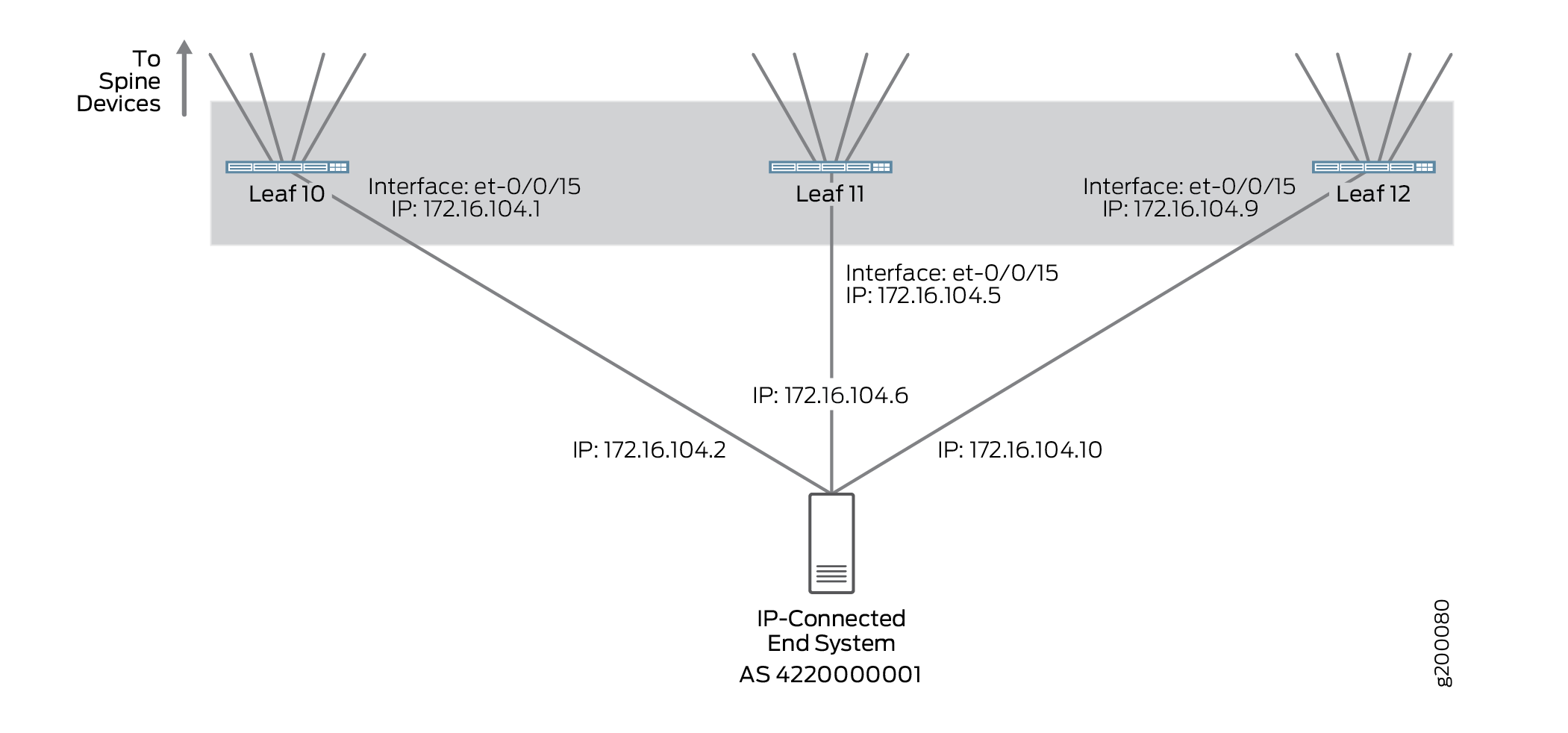Multihoming an IP-Connected End System Design and Implementation
For an overview of multihoming an IP-connected end system, see the Multihoming Support for IP-Connected End Systems section in Data Center Fabric Blueprint Architecture Components.
Figure 1 illustrates the multihomed IP-connected end system—in this procedure, the end system is an IP-connected server—that is enabled using this procedure:

This configuration uses one VLAN per leaf device access interface. See Configuring a Layer 3 Subinterface (CLI Procedure) to enable VLAN tagging if your setup requires multiple VLANs per leaf device access interface.
Configuring the End System-Facing Interfaces on a Leaf Device
To configure the IP address of each end system-facing interface on the leaf devices:
Configuring EBGP Between the Leaf Device and the IP-Connected End System
EBGP—which is already used in this reference design to pass routes between spine and leaf devices in the underlay network—is also used in this reference design to pass routes between the IP-connected server and a leaf device.
Other routing protocols can be used to pass routes between an IP-connected end system and the leaf device. However this is not recommended.
To configure EBGP between a leaf device and an IP-connected end system:
Multihoming an IP-Connected End System—Release History
Table 1 provides a history of all of the features in this section and their support within this reference design.
Release |
Description |
|---|---|
19.1R2 |
QFX10002-60C and QFX5120-32C switches running Junos OS Release 19.1R2 and later releases in the same release train support all features documented in this section. |
17.3R3-S1 |
All devices in the reference design that support Junos OS Release 17.3R3-S1 and later releases in the same release train also support all features documented in this section. |
